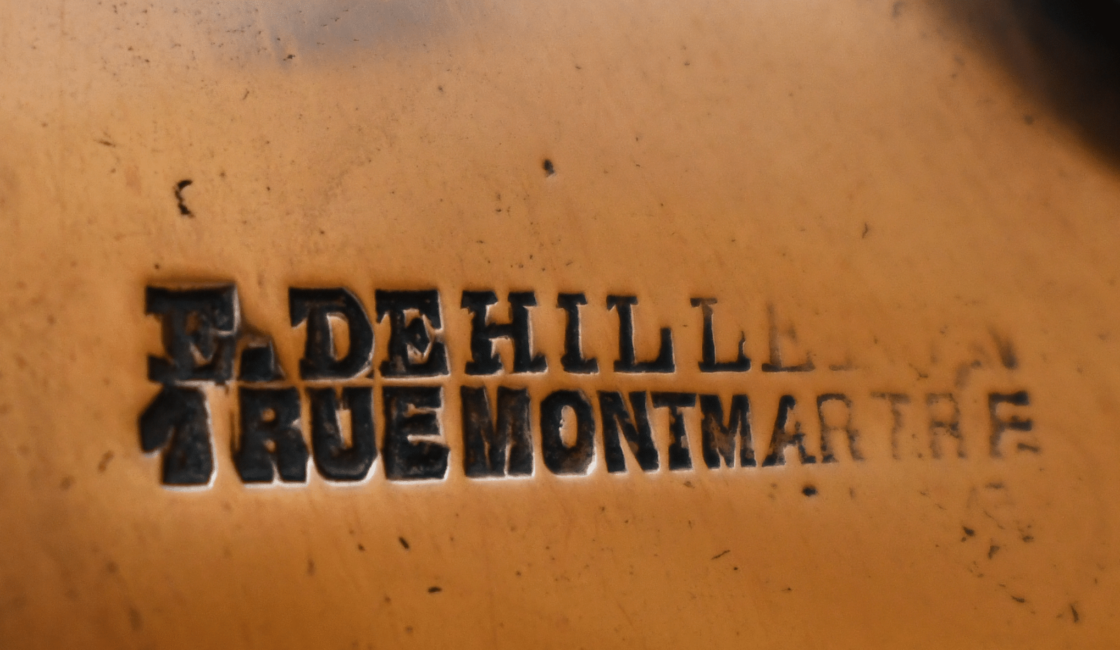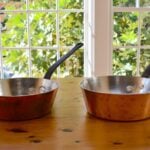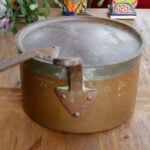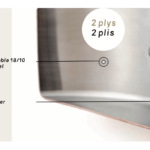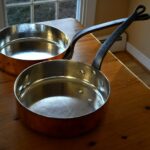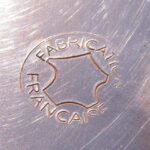I’ve pulled some information together into an ongoing Buyer’s Guide geared towards helping you evaluate vintage copper and decide what’s right for you. (Are you a copper seller? I have a few tips for you, too.)
Start here!
I’ve put together some pages that I hope can help get you started.
- Frequently Asked Questions about vintage copper — why I think it’s special, why it’s lined with tin, what it’s like to use and cook with it…
- Identification for some tips on how to figure out who made a piece of vintage copper (and when!)
- Cooking & care for suggestions on how to use and care for your vintage copper
Well-known makers
 A lot of French and European coppersmiths made copper cookware! Most of them aren’t around any more, but you can identify their pots and pans by their name stamped in the copper.
A lot of French and European coppersmiths made copper cookware! Most of them aren’t around any more, but you can identify their pots and pans by their name stamped in the copper.
“Field guides” provide some history and examples of a few of the more well-known makers with some history and photographs of stamps.
There were (and still are!) also some smaller coppersmiths in the French village of Villedieu-les-Poêles in Normandy.
(And for a quick crash course in the eras of coppersmithing as I see them, please check out Antique vs vintage vs modern.)
Linings
 Copper pans for general cooking can be lined with tin, silver, stainless steel, nickel, or aluminum, and here’s some basic information about these options.
Copper pans for general cooking can be lined with tin, silver, stainless steel, nickel, or aluminum, and here’s some basic information about these options.
- Tin is my preferred lining.
- Silver-lined copper was offered starting in the early 19th century. Silver is electroplated onto copper in a very thin layer, and was generally considered for presentation pieces. Gentle care helps preserve a silver lining, but once damaged, it can be more costly to replace.
- By the 1970s, manufacturers could bond nickel, aluminum, and stainless steel to copper. Aluminum-lined pans were produced in limited numbers and I have not yet featured aluminum-lined pieces on this site.
- I’ve compiled a post about Cupretam, Cuprinox, and Cupronil to discuss the tin-, steel-, and nickel-lined pieces during the 1980s-2000s era.
- Stainless-steel lined pans were made with three different interior finishes.
- It can be tricky to distinguish stainless-lined from nickel-lined pans, so here are some suggestions.
Buying copper online
I’ve bought all my copper pots and pans online and I’ve learned a lot in the process.
- See Where I buy copper to learn the online sellers I can recommend to you. (I have no financial relationship with any seller, nor do I sell copper myself.)
- My buying mistakes has some lessons learned about this process.
- My Reference: Measurements, weight, and thickness tables can help you estimate the thickness of a copper pan by comparing it to others I’ve measured.
- Online sellers must pack pans carefully or they’ll arrive damaged. I have two posts on shipping boxes I have known — the good and the bad — plus a step-by-step unpacking of a very well-packed pan.
- You will have to decide whether the pan you’re buying needs retinning. Here’s how I decide whether to retin or not.
My opinions
I’ve formed some opinions about specific brands of copper.
- Counting Mauviel’s rivets
- In praise of no-name copper
- Mauviel’s path forward
- My problems with Baumalu
- The demise of Mauviel’s cast iron handles
Grab bag
You may find these posts useful as you learn about copper and build your collection.
All Buyer’s Guide posts
Alternatively, here are all the posts in the Buyer’s Guide category.
